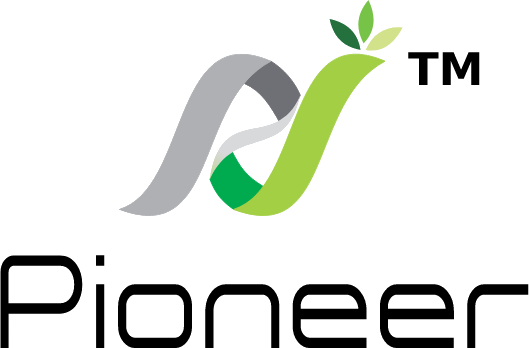Need to enter a super-high buy-in event without getting stuck in verification limbo? Here’s the practical short version: pre-verify your identity, prepare source-of-funds docs, and stagger deposits so the casino or tour operator has time to review before registration closes. Do that and you avoid rushed requests, delayed seating, or worst-case disqualification.
Hold on. Treat KYC as part of your tournament logistics, not an afterthought. For million-dollar events or even $25k–$100k buy-ins, verification can take anywhere from a few hours to several weeks if you trigger enhanced due diligence. This guide tells you exactly what to prepare, how organizers typically process KYC, and the concrete mistakes that trip up recreational high-stakes players.

Why KYC Matters More as Buy-Ins Rise
Wow! Big buy-ins raise regulatory and anti-money-laundering flags automatically. At small stakes, a quick ID check suffices. At six-figure levels, operators must verify the legality of funds, tax residency, and sometimes the business relations behind deposits. This protects the operator and keeps the event compliant with local regulations.
On the one hand, organizers need to accept entries quickly so the tournament runs on schedule. On the other hand, compliance teams must satisfy AML rules. That tension explains why pre-event KYC windows exist: they reduce the last-minute friction that ruins both tournament flow and player experience.
Practical takeaway: if you’re planning to buy in to an event advertised as “immediate seat,” assume that phrase applies only after you complete full verification. Don’t book travel until your verification status is green.
Common Verification Steps for High-Stakes Poker
Here’s the usual verification workflow you’ll encounter when buying into the most expensive tournaments:
- Account creation and basic ID upload (passport or government ID).
- POA — proof of address (utility bill or bank statement dated within 3 months).
- Source-of-funds (SOF): bank statements, sale contracts, corporate filings, or investment sale documentation if the buy-in is large.
- Enhanced due diligence (EDD) if you are a politically exposed person (PEP) or if funds appear from high-risk jurisdictions.
- Possible video KYC or in-person verification at the tournament venue.
On average, straightforward cases clear within 24–72 hours. But once SOF documents are requested, expect a minimum 5–14 day turnaround for most operators unless you have a VIP compliance contact or attorney liaison.
Timeline Examples & Benchmarks
To plan properly, use these practical benchmarks:
- Low friction (<$10k): ID + POA — 0–48 hours.
- Medium friction ($10k–$100k): ID + POA + one month bank statements — 48 hours to 7 days.
- High friction (>$100k and multi-million buy-ins): ID + POA + SOF documents + EDD — 1–4 weeks (sometimes longer for cross-border funds).
Example case: a $300,000 buy-in triggered an operator’s EDD because the deposit came from a trust. The player provided a trust deed and bank transfers within four days, but final clearance required legal affirmation — total 11 days. Don’t be that player who wires funds five days before the event and expects instant clearance.
Mini-Case: Two Players, One Final Table
Player A: Pre-verified. Uploaded passport and three months of bank statements two months before the event. Showed a sale-of-property contract for part of the funds. Cleared in 48 hours. Sat down and played.
Player B: Tried to wire the same day. ID uploaded, but the bank flagged the transfer; operator requested SOF and a corporate certificate. Player B missed the registration cut-off and was denied entry. Lesson learned: pre-verification buys seats.
Comparison: KYC Approaches & Tools
| Method / Tool | Typical Time | Best For | Pros | Cons |
|---|---|---|---|---|
| Document Upload (ID + POA) | 0–72 hrs | Most players | Simple; accepted widely | Can be delayed if scans unclear |
| Bank-Verified SOF | 2–7 days | High buy-ins funded from bank | Strong audit trail | Bank delays; privacy concerns |
| Video KYC | Immediate–48 hrs | Remote players; image-heavy regions | Fast, personal | Requires scheduling; privacy |
| Crypto Chain Analysis | 24–72 hrs | Crypto-funded entries | Shows on-chain provenance | Complex; some sources flagged as high-risk |
Echo: choose the method that matches how you fund the buy-in. Crypto users, for example, should be ready with wallet history and exchange withdrawal confirmations; fiat users should have bank statements and, where applicable, proof of asset sale.
Where Bonuses & Platform Choice Fit In
At this level it’s not just about the buy-in. Operators that offer satellite routes, deposit bonuses, or risk-offset products can help you access high buy-ins more cost-effectively — but only if you meet KYC early. If you plan to use online qualifiers or bankroll boosts, read the terms and prepare verification ahead of time. For players who factor in promotional value while assembling roll, check curated promo pages like bluff bet bonuses to compare which offers allow satellite play or have favorable wagering terms that can convert into tournament tickets.
Another aside: some promotions restrict maximum conversion or impose withdrawal holds, which complicates last-minute entries. Plan promos into your timeline, not as a late-stage squeeze to make the buy-in happen.
Quick Checklist — Pre-Event KYC Pack
- Government photo ID (passport preferred) — scanned & clear photos.
- Proof of address (utility or bank statement within 90 days).
- Three months of bank statements showing fund source.
- Sale contracts / investment liquidation documents (if applicable).
- Corporate documents if paying from a company account (certificate of incorporation, director ID).
- Crypto wallet export + exchange withdrawal receipts (if using crypto).
- Contact details for your compliance lawyer or accountant (for high-value transfers).
- Pre-register & confirm the organizer’s KYC window and points of contact.
Common Mistakes and How to Avoid Them
Something’s off—most problems are avoidable. Here’s what players do wrong, and how to fix it.
- Mistake: Uploading low-quality scans. Fix: Use a phone camera in good light or a scanner; upload PDFs if allowed.
- Mistake: Sending funds from an unverified third-party account. Fix: Transfer from accounts in your name or provide documented authorizations.
- Mistake: Waiting until the last minute. Fix: Start KYC as soon as you commit to the event.
- Mistake: Assuming crypto is anonymous. Fix: Provide exchange withdrawal receipts and on-chain proofs showing the flow of funds.
- Mistake: Not reading promo rules linked to tournaments. Fix: Check whether bonuses are eligible for satellite entries before relying on them; sometimes they are restricted to casino play only.
At first I thought “I’ll deal with KYC an hour before”—then I missed a seat. Learn from that one.
How to Speed Up Clearance
Two practical ways to shorten verification timelines:
- Pre-verify with the operator’s accreditation team: email compliance, ask for a “pre-check” and upload docs to a secure portal well ahead of time.
- Use bank-certified letters or lawyer-signed affidavits for complex corporate structures to remove ambiguity.
Pro move: if you’re a regular high-stakes player, keep a compliance folder with notarized copies of frequent documents to avoid last-minute notarization hassles.
Mini-FAQ
How long before the tournament should I start KYC?
Start as early as possible: at least two weeks for six-figure buy-ins; 48–72 hours may work for smaller high-stakes events if you have clean documentation.
Will paying via crypto make things faster?
Not necessarily. Crypto can be fast for settlement, but compliance teams still require provenance and exchange withdrawal records; this can add time if on-chain history is complex.
What happens if my KYC fails close to registration?
Most operators will delay seating or cancel your participation. If you’ve wired funds, you may face withdrawal holds until the matter is resolved. Prevention is better: pre-verify.
Are there platforms that combine tournament access and bonuses useful for qualifiers?
Yes. Some platforms allow promotional funds or satellite entries; check terms carefully. Resources listing promos — including comparator pages like bluff bet bonuses — can help you find offers that permit satellite play or reduce net cost of entry.
Final Echo: Risk Management for High-Rollers
To be honest, big-money poker is logistics as much as it is play. The chips and the tables are the fun part; the KYC, documentation, and legal checks are the plumbing. If you treat verification as part of your tournament plan — schedule it, hand it off to a trusted agent if needed, and align deposit timing with compliance windows — you significantly reduce the chance of missing or being barred from an event.
One rider: regulatory environments differ by jurisdiction. Canadian players should note provincial nuances and whether an operator is operating under a local regime or an offshore licence. Where uncertainty exists, request the compliance policy in writing and, if necessary, consult legal counsel for multi-million-dollar transfers.
18+. Play responsibly. If gambling is causing problems for you or someone you know, seek help from local resources and responsible gaming services. This article is informational and does not guarantee outcomes or compliance results.
Sources
Internal industry practice, documented tournament case examples (publicly reported high-buy-in events), compliance process templates used by major operators. For personalized or legal advice, consult a compliance attorney.
About the Author
Experienced gambling operations consultant and recreational high-stakes player based in Canada. I’ve navigated KYC processes for six-figure buy-ins and advised players and operators on compliance best practices. Not a lawyer — for legal matters, seek qualified counsel.
















